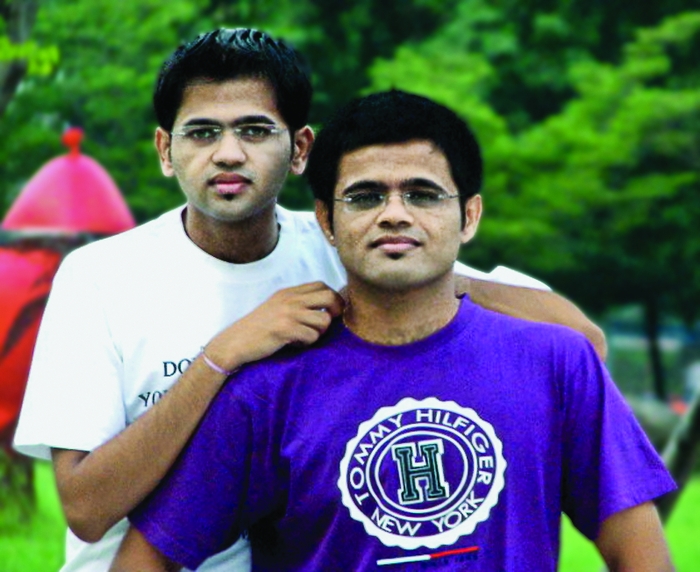Advertisement
Grab your lab coat. Let's get started
Welcome!
Welcome!
Create an account below to get 6 C&EN articles per month, receive newsletters and more - all free.
It seems this is your first time logging in online. Please enter the following information to continue.
As an ACS member you automatically get access to this site. All we need is few more details to create your reading experience.
Not you? Sign in with a different account.
Not you? Sign in with a different account.
ERROR 1
ERROR 1
ERROR 2
ERROR 2
ERROR 2
ERROR 2
ERROR 2
Password and Confirm password must match.
If you have an ACS member number, please enter it here so we can link this account to your membership. (optional)
ERROR 2
ACS values your privacy. By submitting your information, you are gaining access to C&EN and subscribing to our weekly newsletter. We use the information you provide to make your reading experience better, and we will never sell your data to third party members.
Environment
Growing Up With C&EN
by A. Maureen Rouhi
June 17, 2013
| A version of this story appeared in
Volume 91, Issue 24

\

\
The Ambades: Balasaheb (from left), Rohan, and Swapnil.
How old were you when you first became aware of C&EN? I must have been in my junior year of college when I first noticed the magazine. Amazingly, some people grew up with C&EN, their lives deeply influenced by the magazine in a way editors-in-chief can only dream about.
Swapnil B. and Rohan B. Ambade are brothers whom I met last April at an ACS On Campus event in South Korea. The two are Ph.D. students studying optoelectronic materials in Chonbuk National University. When I introduced myself to them, they were beyond delighted. As they explained, they have known C&EN since they were children. And as their father, Balasaheb, wrote to me, C&EN has been a major influence in their family.
Balasaheb H. Ambade is a chemical engineer who in 1984 built a chemical manufacturing business in Maharashtra, India. In a letter, he told me that he came across C&EN when he was a young man “trying to figure out career options.” The first copy he read was the Dec. 13, 1971, issue. The guest editorial, “Trading Our Future For Profit,” caught his attention, he recalled. And reading through the magazine, he “was somehow mesmerized to take up chemical engineering.”
I wondered if Balasaheb received C&EN as an ACS member. In fact, he obtained C&EN in bundles from sellers of used books. He has been reading C&EN since the 1980s until last year, when unfortunately he became hemiplegic after a stroke.
Using his chemical engineering training, Balasaheb built Kamal Chemicals, a manufacturing facility that produces a sulfonated castor oil for use as a surfactant in the sugar and textile industries. Since his stroke, Swapnil and Rohan have been managing the business from South Korea.
Swapnil recalls looking at copies of C&EN when he was nine years old. He and Rohan grew up surrounded by the chemical engineering their father practiced and by C&EN. Both later pursued the same degree as their father. “I was surprised,” Balasaheb wrote. When he asked his sons about their career selections, he recalled, “they replied in common that they were probably driven to take up chemical engineering as they grew up seeing more C&EN magazines than reading Tintin [comics]. … When most of their peers want to be on [the society page of Indian tabloids], my sons are more inclined to be in the news for all good reasons, especially [regarding] social responsibilities.”
When a family owns a business, the pressure on children to join it is immense. Yet, “my father never told us that we had to be chemical engineers,” Swapnil tells me. “But we saw how he worked so passionately.”
“As parents it is our responsibility to invest in the future of our children, in the best possible way,” Balasaheb wrote. “Today, as a father, I feel proud that I invested rightly on my children. The choices they made today were simply an influence of what they saw and probably had read over the years. To this end, I owe [a debt of gratitude] to C&EN.”
The father’s investment is paying off. When I asked the sons about social responsibility, they told me in an e-mail that clean and sustainable energy is close to their hearts and perhaps the main reason they decided to study solar cells. They believe it is their responsibility to help provide society with sustainable energy sources in the future.
C&EN can’t take a lot of credit for the upbringing of the Swapnil and Rohan, but it sure feels good to know that this magazine touches people’s lives in surprisingly profound ways.
Views expressed on this page are those of the author and not necessarily those of ACS.



Join the conversation
Contact the reporter
Submit a Letter to the Editor for publication
Engage with us on Twitter